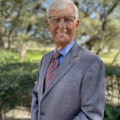Helping patients own their problem: A commonsense approach to TMD
Dentists often try to fix problems patients don’t even know they have. While our intentions are good, it can come across as pushing treatment instead of providing care. The way to avoid this is simple: help patients recognize and own the problem themselves.
How? Speak their language. Use real-life analogies that make sense. People don’t respond to technical jargon—they respond to something that clicks. That’s not new thinking. It’s how humans have taught and learned for centuries. Clear, plain talk works. It always has.
The commonsense train of thought
Aside from breakage or trauma, people have trouble with their teeth in just three ways. Two are biological infections: tooth decay and gum disease. The third is mechanical: how the bite comes together and how the jaw joints and muscles function.
Dentists are well trained to treat the infections. But when it comes to mechanics, that’s where things fall apart. If the bite is off—even slightly—it sets off a chain reaction. The teeth hit wrong. The jaw shifts. Muscles strain. Joints compress. The system tries to adapt, but it’s not built to do that forever. The result is pain, wear, and breakdown. We call it TMD—temporomandibular disorder.
The frustrating part is, most dental and medical professionals were never trained to recognize it. Patients are often told, “Everything looks fine,” while they struggle with migraines, jaw tension, broken teeth, and more. It’s a global blind spot.
But let’s stop and use some real-world logic, shall we?
Here’s what I see in the real world—not textbooks …
Posterior interferences = Gears out of alignment
Ask any mechanic: if the gears in a car don’t line up right, something breaks. You hear grinding. You feel shaking. That car won’t drive right until the alignment is fixed.
Teeth work the same way. If back teeth hit too soon or in the wrong direction, the jaw compensates. Muscles fire unevenly. Joints get overworked. Pain follows.
It’s mechanical—pure and simple.
Torqued mandible = A crooked body frame
Ask any chiropractor: when one leg seems shorter, it’s usually the pelvis twisting. The body compensates—but at a cost: knee pain, back pain, and fatigue.
It’s the same with the jaw. If the lower jaw twists to avoid a bad bite, the neck, head, and posture all adjust. That creates tension and chronic discomfort.
This isn’t woo-woo. It’s just anatomy.
Deficient maxilla = A crooked door frame
Ask any carpenter: if the door frame is off, the door sticks—no matter how nice the handle is.
The upper jaw is that frame. If it didn’t grow forward or wide enough, the lower jaw can’t find a good fit. That leads to clenching, joint strain, and airway issues.
So, ask yourself:
- Do muscles and joints randomly hurt for no reason?
- Or is it more likely that faulty mechanics in a tight, sensitive system is causing the pain?
We’re not ignoring science. We’re adding common sense to it.
The TMJ Trifecta is real. I’ve seen it. I’ve treated it.
And when you treat all three parts, patients finally get better.
Editor’s note: This article originally appeared in Perio-Implant Advisory, a chairside resource for dentists and hygienists that focuses on periodontal- and implant-related issues. Read more articles and subscribe to the newsletter.
About the Author

McHenry “Mac” Lee, DDS
McHenry “Mac” Lee, DDS, is a trailblazer, teacher, and truth-teller in dentistry. He has over 50 years’ experience chairside and 35 years’ experience at the front of the room. He was an early adopter of patient communication training; he teamed up with Walter Hailey to teach dentists how to talk like humans, not textbooks. He has authored three books for dental consumers, using simple, clear language that patients understand. Now in his second career, Dr. Lee is podcasting and teaching the world about TMD. His motto is: tell the truth, solve the pain, and make complex things simple. For more information, see his book on Amazon.
